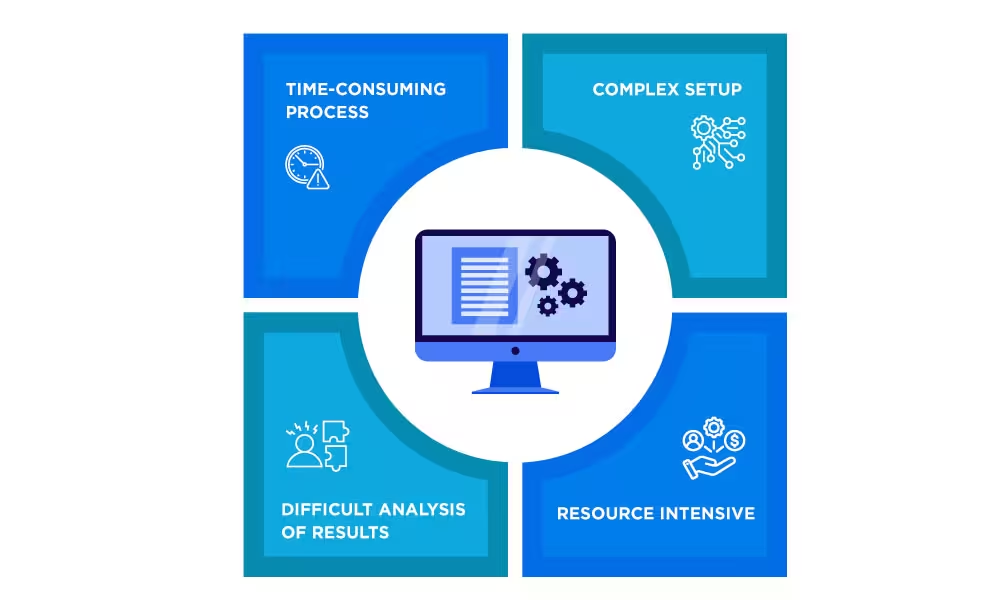To consistently have maximum performance from your systems during the operational hours there is a need for some tests which verify the stability of the system, and it is done by soak testing. It tests whether the system can handle a huge volume of load for a longer period of time. It involves running the software under heavy loads for an extended period to identify potential issues that might surface during prolonged use. This testing technique ensures that your system can handle continuous high-volume activity without degradation, memory leaks, or performance bottlenecks.
In this blog, we’ll explore the benefits, challenges, and strategies associated with soak testing to help you implement it effectively in your software development process.
What is Soak Testing?
It, also known as endurance testing, simulates real-world conditions by subjecting the system to expected workloads for long durations. Unlike load testing, which focuses on short-term performance under high loads, it aims to discover issues that emerge after prolonged periods. These could include memory leaks, database connections failing, or system crashes. The primary goal of soak testing is to ensure that your software remains stable and efficient, even during extended operation times.
What are the benefits of Soak Testing?
- Detects Memory Leaks
It is particularly effective at identifying memory leaks, which occur when memory is not released after it is no longer needed. Over time, these leaks can cause the system to slow down or even crash, especially under long-term use. Catching these issues early ensures your system remains stable.
- Improves System Stability
By exposing the software to prolonged periods of usage, it uncovers any instabilities that may not be evident during shorter tests. This can include failures in network connections, crashes, or data corruption, which may only emerge after hours or even days of use.
- Ensures Scalability
A system might work well under short bursts of high traffic, but it shows whether it can handle continuous traffic over time. It helps in assessing the scalability of the system, ensuring that the infrastructure can support a growing user base or increased data volumes without compromising performance.
- Enhances Performance Optimization
Soak testing provides valuable insights into how a system performs over time. It helps identify potential bottlenecks, allowing developers to optimize their code and system architecture for better long-term performance. This contributes to a smoother user experience and greater efficiency.
Challenges of Soak Testing

- Time-Consuming Process
One of the biggest challenges with soak testing is the time required to perform it effectively. It requires running a system for extended periods, sometimes for days or weeks, which can delay the release of the software if not planned properly.
- Complex Setup
Setting up an environment for soak testing can be complex. It involves configuring the system to mimic real-world conditions, which may include simulating thousands of users, network traffic, and other variables. The complexity of this setup makes it harder to execute soak testing consistently and accurately.
- Resource Intensive
Soak testing can require significant resources, including hardware, software, and manpower. The need for sustained high loads over long periods means that organizations need to invest in robust infrastructure and monitoring tools to get accurate results.
4. Difficult Analysis of Results
Interpreting soak testing results can be challenging, especially in large-scale systems. Developers must carefully analyze logs, memory usage, and performance metrics to pinpoint issues. The volume of data generated during soak testing can make this analysis even more complex.
Strategies for Effective Soak Testing
- Plan Testing Scenarios
Before starting soak testing, it’s essential to define realistic testing scenarios that mimic actual usage conditions. This should include expected workloads, peak usage times, and typical user behavior. Planning these scenarios will help create a more accurate simulation and reveal issues that users might encounter.
- Use Monitoring Tools
Leverage performance monitoring tools to track key metrics such as CPU usage, memory consumption, and response times. These tools help gather the data needed to identify system bottlenecks and failures during the soak test. Automated tools can also notify the team of any issues in real-time, making it easier to troubleshoot problems quickly.
- Run Tests in Production-Like Environments
To get the most accurate results, soak testing should be performed in environments that closely mirror production conditions. This means replicating the same infrastructure, data loads, and configurations as the live environment. Testing in a production-like setup ensures that any issues identified during the soak test are relevant to the actual deployment.
- Gradual Load Increase
Instead of applying full load at once, it’s advisable to gradually increase the workload during soak testing. This allows the team to observe how the system handles growing stress over time and pinpoint the exact load that begins to cause performance degradation.
- Set a Time Limit
Given that soak testing is time-intensive, setting a time limit helps streamline the process. For example, if testing for a week is impractical, you can scale down the test duration while increasing the load to simulate long-term usage. However, the test duration should still be long enough to reveal potential issues.
Conclusion
It plays a crucial role in ensuring that your software can perform reliably over long periods of continuous usage. While it presents certain challenges such as time consumption and resource demands, the benefits far outweigh the difficulties. By detecting memory leaks, improving stability, and ensuring scalability, it contributes to the overall quality and reliability of the system.
To overcome challenges, proper planning, monitoring, and gradual load application are key strategies for successful soak testing. Implementing these practices will help ensure your system remains robust, efficient, and ready for long-term operation.
Read More:

